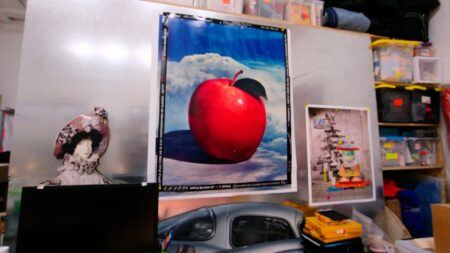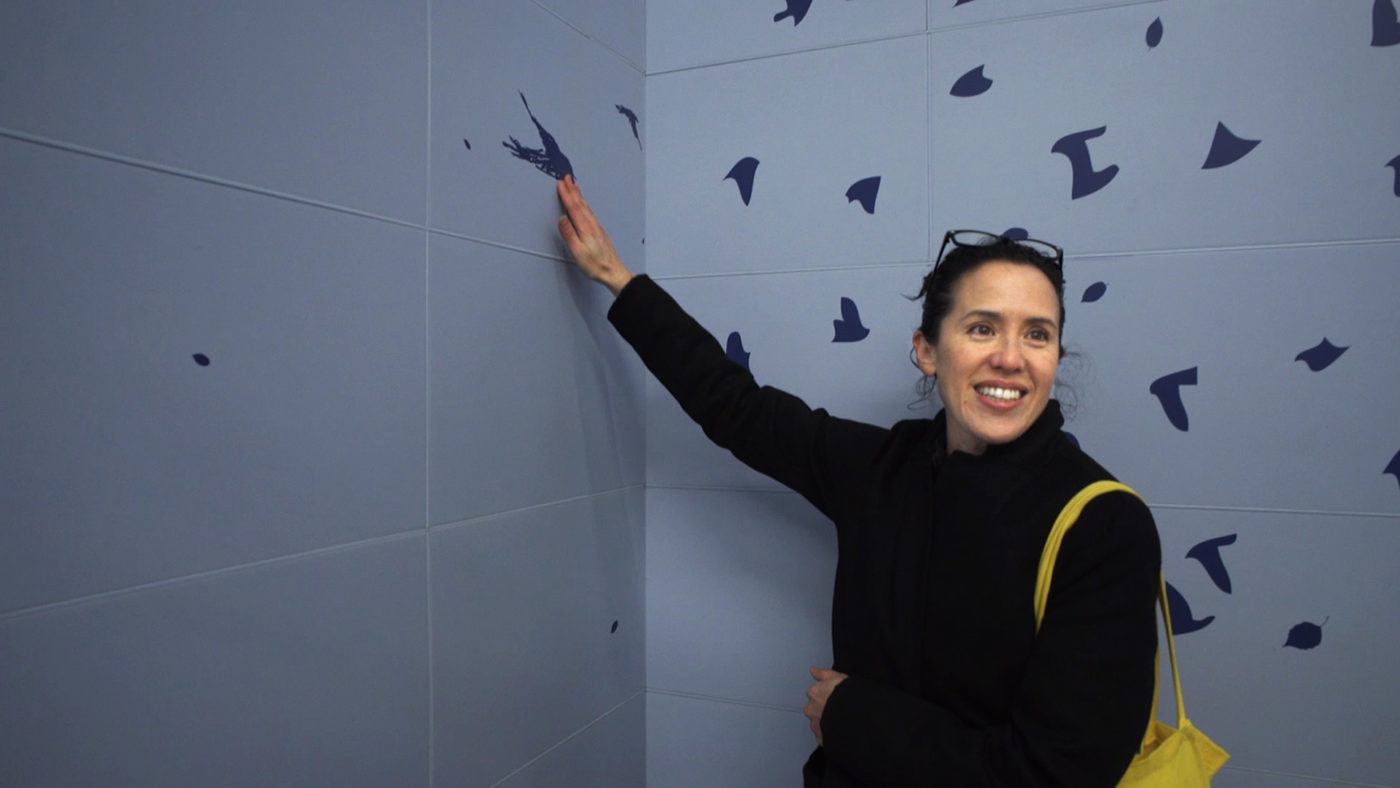Interview
“Blueprint for a Landscape”
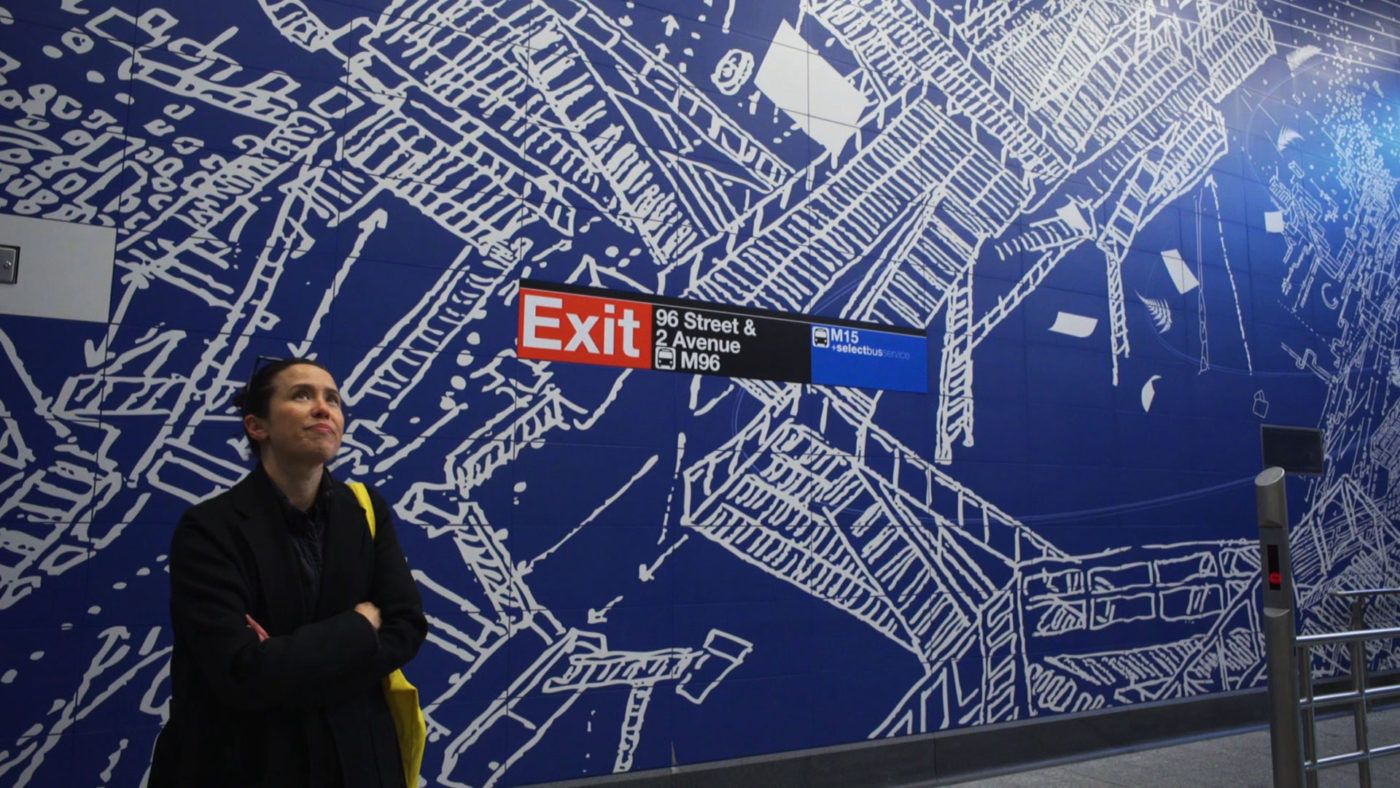
Production still from the Art21 Extended Play film, "Sarah Sze: Designing a Subway Station." © Art21, Inc. 2017.
Artist Sarah Sze shares the process behind her immersive installation Blueprint for a Landscape (2016) at the Second Avenue Subway’s 96th Street station. This text is excerpted from an interview conducted with the artist in February 2016, just prior to the installation of the work.
ART21: What’s it like to be inside the 96th Street station, where Blueprint for a Landscape will be installed?
SZE: We ride the subway all the time and we don’t realize what an intense experience it is—that we’re actually descending underground. My work for the project is largely about diving into an alternative world where your sense of gravity, air, and light slightly change. I wanted to harness and bring up the volume on the idea of entering another world and experiencing a full comprehensive environment. It is rare that you get to create a completely immersive environment as an artwork.
A subway station is one of the most democratic locations one can find. You have repeat local audiences and you have international audiences. It’s always a discovery, seen in transit, not a destination to see art. I like the idea of there being commuters who will know the station, have ownership of it, and will use the art as a way finding device—they will orient themselves in relationship to each different entry and exit with the artwork at those locations. In some ways, a subway is arguably the most permanent space you can ever create an artwork. A building or a public space, as we know from Richard Serra, is not always permanent. But a subway station is like an internal organ of the city and will likely be around for quite a while.
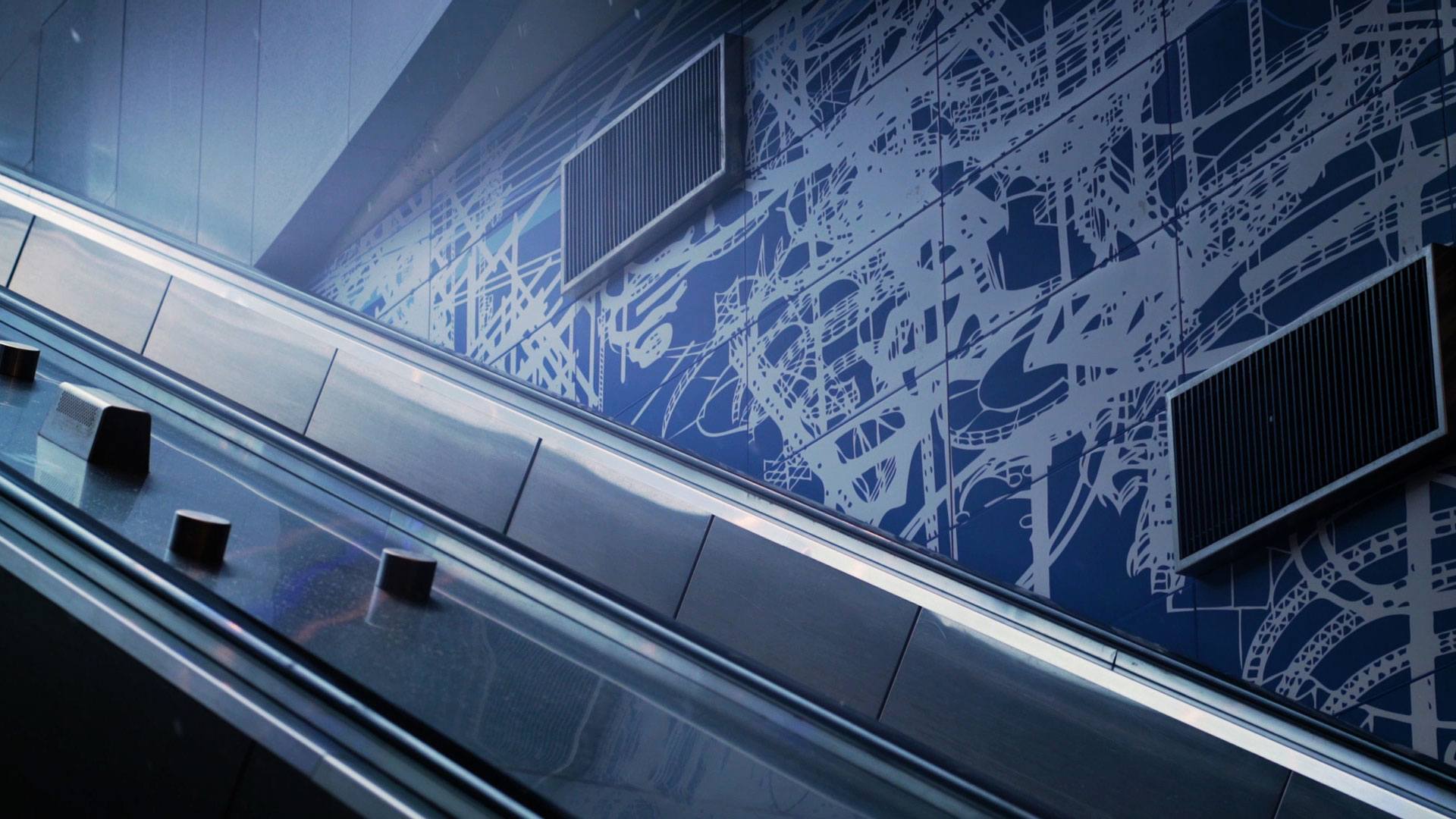
Production still from the Art21 Extended Play film, “Sarah Sze: Designing a Subway Station.” © Art21, Inc. 2017.
ART21: What influenced your process as you created the work?
SZE: I was thinking a lot about the Russian Constructivists and the Italian Futurists. Both were interested in trains, planes, and such inventions that changed people’s sense of time and space. I think we are actually in a similar time now. Our experiences of time and space are accelerating at this pace that is kind of mind-boggling.
I was also thinking about printmaking, and Japanese printmaking specifically. I was interested in this idea of using the dark and the light inherent to the space. One of my favorite aspects of Japanese printmaking is when the artist really harnesses the white of the page, a technique often evident in snowscapes. There is a classic Hokusai work, Ejiri in Suruga Province (Sunshu Ejiri), 1830-1832, which depicts paper leaving a man’s hand to fly off through the air and into the landscape. Jeff Wall staged a photograph based on that print. I wanted to make a piece where the whole image sort of fell apart into the white, while also translating this idea of speed, wind, and progression as you moved across this space.

Production still from the Art21 Extended Play film, “Sarah Sze: Designing a Subway Station.” © Art21, Inc. 2017.
ART21: Which sections are you most excited to see installed?
SZE: I like the sections where the images themselves are falling apart. They reference how we are actually putting together visual information, reading it in two and three dimensions and letting it kind of fall to the edge of recognition. There is one section that seems like the shattering of light on the surface of water, that is experienced as you’re descending underground. It will be different in scale and proximity from other parts of the station because you’re in this very long narrow space.
ART21: What made you want to say yes to this commission?
SZE: I like the idea of a work that people may not initially recognize as an artwork. I was excited by the commission because of the accessible nature of the space. People can experience this strange border between having an everyday experience that has nothing to do with art, and then suddenly find themselves in the midst of art. This liminal space invades your consciousness and sticks with you in ways that are elastic in time, and in a way that I think only art experienced in the fabric of daily life can do, if it is done well.
I’m interested in public art that feels sort of harmoniously woven into the environment. I like this Second Avenue Subway project because it has that quality of being seamlessly inserted in the space. You enter, you move through it, and then you move out of it. You know you are going to arrive at it again. At the same time it also allows for a very intense, concentrated experience. It is not a drive-by object. Sculpture can be in parks or public spaces and you just pass it by, like a lamppost or a hydrant. I want the art to trip you up and emphasize a blurred boundary between daily life and art, disorienting and then reorienting you in a new way.
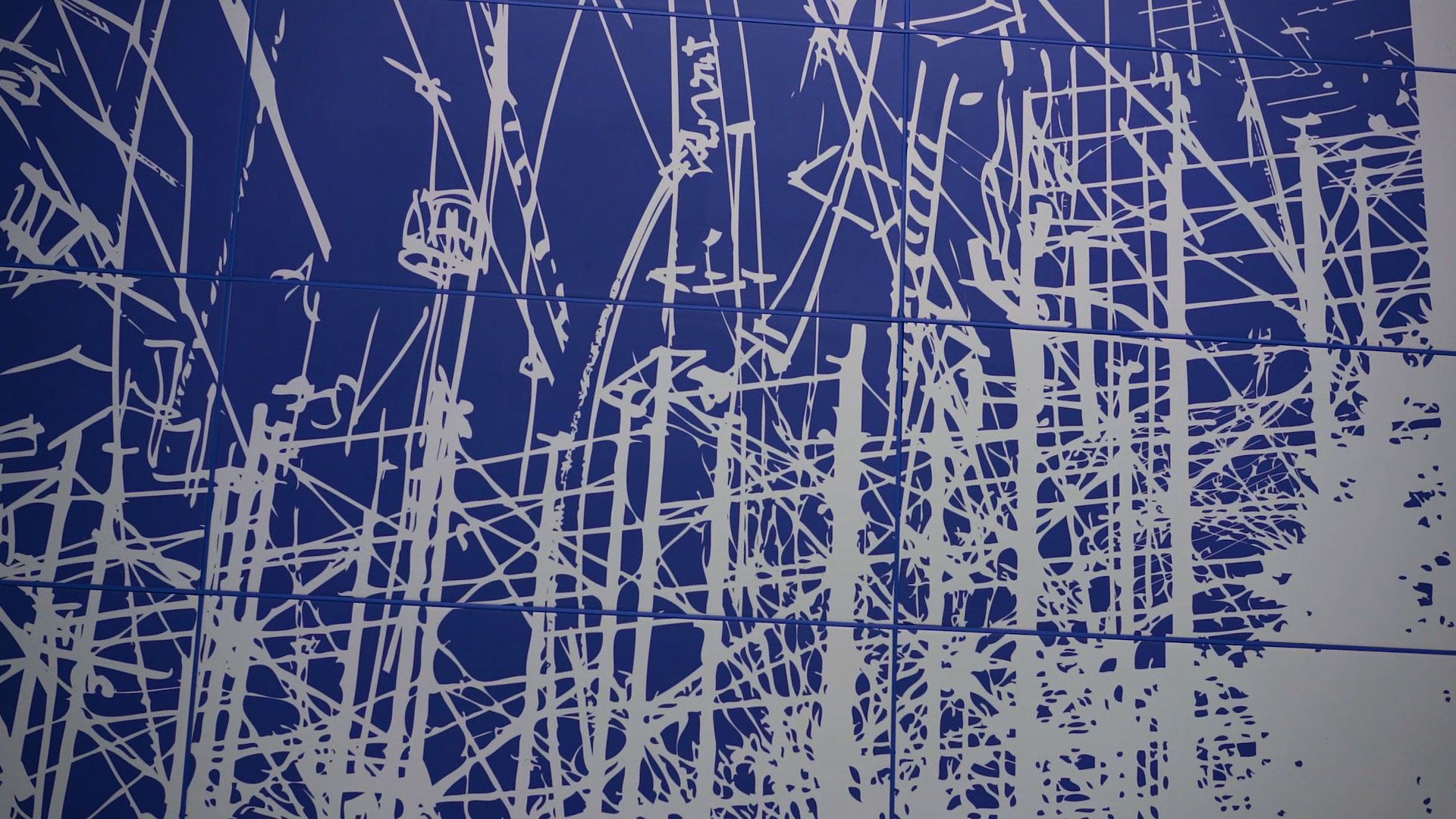
Production still from the Art21 Extended Play film, “Sarah Sze: Designing a Subway Station.” © Art21, Inc. 2017.
ART21: What makes the subway so interesting?
SZE: The idea that you see the art in transit. You are always moving. You never actually get to experience the work in a static way. You have this sense that the experience is, in and of it itself, fleeting. I think that is unique to the site. When you are in transit, you have a different sense of time and space. For me, I love riding the subway because I feel like it’s this dead time where I’m free to play. You are doing something just by the fact that you are sitting there. You know you are making progress. I think you occupy a unique emotional and psychological place when in transit.
